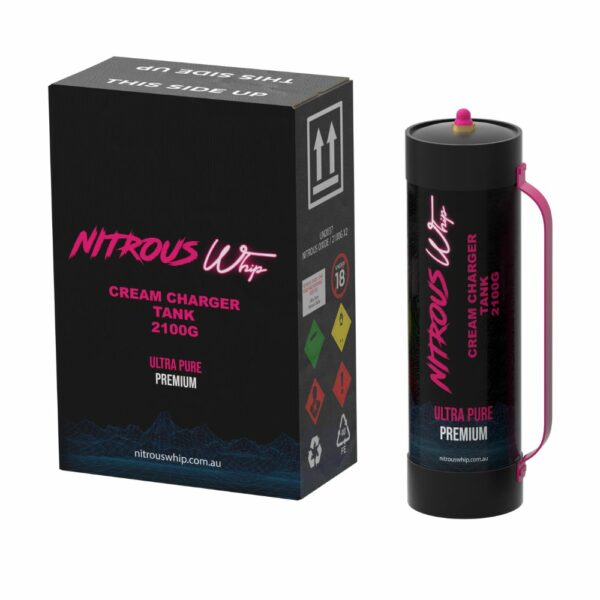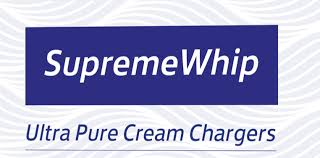Introduction
In recent years, a special item has surged in popularity, especially amongst cooking enthusiasts and partygoers alike: nangs. These small canisters filled with nitrous oxide (N2O) have ended up being a staple in numerous cooking areas and event settings. They are typically used for whipping cream, developing wonderful desserts, and even for recreational purposes. However have you ever questioned what goes on behind the scenes when producing these little marvels? This short article dives deep into the intricacies of producing nangs, exploring whatever from raw materials to the final packaging that strikes the market.
What are Nangs?
Nangs, likewise called cream chargers or nitrous oxide canisters, are small cylinders filled with nitrous oxide gas. They are mostly used in whipped cream dispensers to develop fluffy textures in desserts and drinks. The term "nangs" stems from Australian slang and has actually gained traction worldwide due to its association with enjoyable and cooking creativity.
The Chemistry of Nitrous Oxide (N2O)
Nitrous oxide, commonly referred to as laughing gas, has a variety of applications beyond culinary usages. It works as an anesthetic in medical settings and is used in motorsports to boost engine power. In the context of nangs, however, it's everything about its capability to whip cream effectively.
Behind the Scenes: Production Nangs for the Market
When we speak about manufacturing nangs, we're not simply talking about filling canisters with gas; it's a complex process involving safety procedures and stringent quality checks. Here's a closer look at how these important kitchen area tools come to life.
Raw Materials: Sourcing Nitrous Oxide
The initial step in manufacturing nangs involves sourcing high-quality nitrous oxide gas. Providers should guarantee that the N2O satisfies industry standards for pureness to ensure security during use.
Purity Standards: Food-grade nitrous oxide needs to be at least 99% pure. Supplier Qualifications: Manufacturers often engage with certified providers who stick to strict regulations.
Manufacturing Process Overview
The production process of nangs typically consists of a number of stages:

Safety Procedures During Production
Safety during production can not be overstated; manufacturers execute many preventative measures:
- Proper ventilation systems to disperse excess gas. Personal protective equipment (PPE) for workers dealing with pressurized cylinders. Regular maintenance checks on equipment involved in filling processes.
Understanding Different Types of Nangs
While the majority of people think about nangs as interchangeable products, there are various types customized for different uses:
Cream Chargers vs. Other Types
MOSA Cream Chargers
These chargers are renowned for their dependability and consistent efficiency when whipping cream.
BestWhip Cream Chargers
Understood for their affordability without compromising quality, BestWhip has actually carved its specific niche among budget-conscious consumers.
NitrousWhip Canisters
Particularly designed for professional chefs looking for remarkable lead to light whipping cream quickly.
Nang Tanks vs Bottles
Bigger tanks supply cost-efficient services for establishments that need frequent use while bottles offer benefit for home chefs.
Packaging Nangs for Distribution
Once made and tested, it's time to package these small cylinders securely:
Designing Product packaging Solutions
Effective packaging not just protects the item but likewise promotes it:
- Eye-catching graphics highlighting key features Clear labeling showing use instructions Safety warnings worrying proper handling
Distribution Channels
After packaging, producers disperse nangs through numerous channels:
- Online retailers Culinary supply stores Party supply shops
Environmental Factors to consider in Nang Manufacturing
As customer awareness grows regarding ecological problems, makers have actually begun including environment-friendly practices into their production procedures:
Sustainable Sourcing of Nitrous Oxide
Engaging suppliers who focus on sustainable extraction approaches helps reduce environmental effect while preserving item quality.
Recycling Programs for Used Canisters
Some Nangsta companies have actually initiated programs where consumers can return empty cylinders for recycling or safe disposal-- decreasing waste associated with single-use products.
Legal Regulations Surrounding Nangs
Navigating legal requirements is essential within this industry:
Food Safety Regulations
Manufacturers need to adhere to food security laws that govern how products like N2O are managed throughout production stages.
Age Constraints on Sales
In lots of countries, laws restrict sales of nitrous oxide canisters to individuals below a certain age due to potential misuse-- safeguarding public health stays a priority.
FAQ Section
1. Just what are nangs utilized for?
Nangs are mostly utilized as cream chargers in whipped cream dispensers however also discover leisure usage amongst some consumers when misused as inhalants.
2. Exist various brand names of nangs available?
Yes! There are different brand names like MOSA, BestWhip, and NitrousWhip that accommodate various consumer choices regarding rate and performance.


3. Is nitrous oxide safe?
When used effectively as desired (for cooking functions), food-grade nitrous oxide is considered safe; nevertheless, abuse can lead to health risks.
4. How must I keep my nangs?
Store them upright in a cool location far from direct sunshine or heat sources to maintain optimum pressure levels inside the canister.
5. Can I recycle empty nang canisters?
Yes! Some producers offer recycling programs where you can return empty canisters safely rather of discarding them improperly.
6. What should I do if I presume my nangs were tampered with?
If you notice any signs of damage or tampering with your nangs or their packaging, it's best not to utilize them and report your issues directly to the producer immediately!
Conclusion
Behind the scenes of producing nangs lies a complex system built on safety protocols, quality assurance measures, and an understanding of consumer requirements-- all while adhering strictly to legal policies governing food security requirements. As need continues rising throughout numerous markets-- from cooking arts professionals trying to find efficient options like NitrousWhip or MOSA chargers-- to casual users seeking fun experiences-- it's important that manufacturers stay dedicated not just towards producing premium items however also towards promoting accountable usage amongst consumers worldwide!
In summary, whether you're whipping up delicious desserts or delighting in social gatherings where laughter rules supreme thanks mainly due today's modern-day marvel-- nangs! Comprehending their journey from factory floorings straight onto our cooking area counters makes us appreciate just how much goes into making those small metal cylinders so valuable!